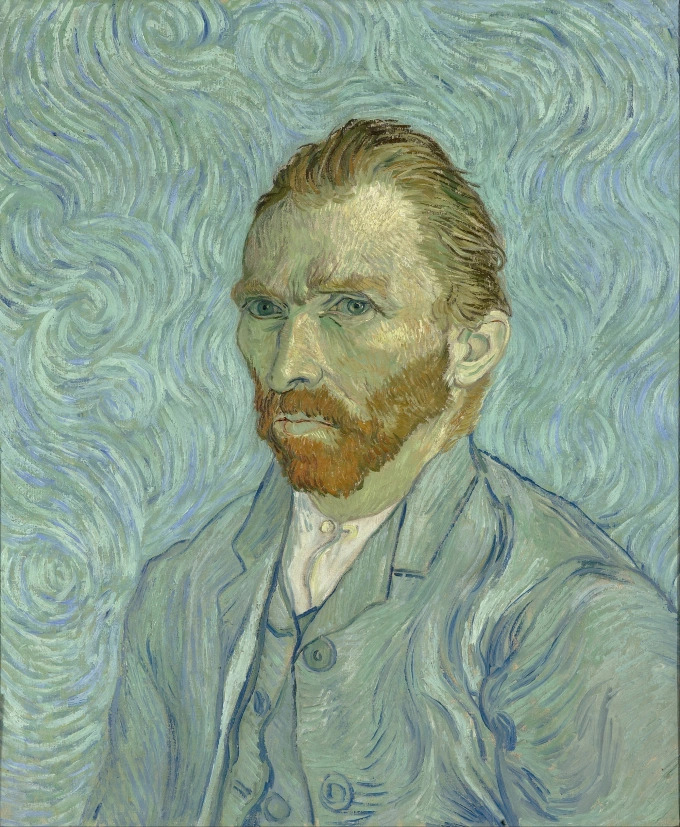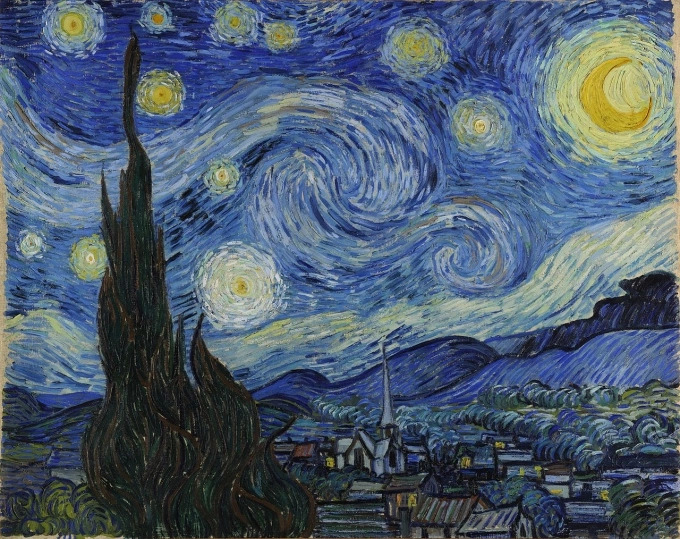On 8/7, Big Think referenced Sam Kelly's book, Human History on Drugs, which explores the lives of famous figures who struggled with addiction. It is widely known that Van Gogh favored the color yellow, but less so that he engaged in the dangerous practice of consuming paint.
According to the Van Gogh Museum, the medical records of Dr. Theophile Peyron, director of the mental hospital where the artist was treated, noted that Van Gogh engaged in this self-poisoning behavior. The artist himself seemed unaware of his actions. In a letter to his brother, he wrote, "I pick up unclean things and eat them, though afterward I barely remember anything", he said.
 |
Self-portrait of Vincent van Gogh. Photo: artcyclopedia |
Self-portrait of Vincent van Gogh. Photo: artcyclopedia
Historians believe that multiple failed relationships, struggles with his art, and a falling out with his friend Gauguin led him into depression, resulting in these unusual behaviors. "Van Gogh lived recklessly, addicted to alcohol and tobacco, making him susceptible to brain disorders," Kelly wrote.
According to Kelly, this behavior is a manifestation of pica, a mental disorder characterized by the compulsion to eat non-food items. Scientists believe Van Gogh was drawn to terpene, a psychoactive compound found primarily in plants, cannabis, and essential oils. As a painter, he had access to materials like paint and turpentine, both of which contain high levels of terpene. Both substances are toxic and can cause serious brain damage if ingested, leading to emotional disturbances, seizures, and hallucinations.
His depression also led him to self-mutilate his ear. In light of this self-harm, he voluntarily entered a mental hospital in 1889 at the age of 36. During this period, he created many masterpieces, with the hospital setting inspiring his famous painting Starry Night. However, according to The Guardian, doctors limited his artistic activities out of concern he would continue to self-poison.
 |
The painting "Starry Night". Photo: vangoghgallery.com |
The painting "Starry Night". Photo: vangoghgallery.com
After a year of treatment, he left the hospital and moved to a small village north of Paris, France, seeking peace. However, on 29/7/1890, he ended his life at 37 after years of enduring mental health issues. According to Gosdp, in an 1889 letter to a friend, he wrote, "My mind is rarely at ease, perhaps because I have never enjoyed a moment's peace in my entire life. All I have are bitter disappointments, which overshadow my entire artistic career", he said.
At the time of his death, Van Gogh was a relatively unknown artist in Europe. Today, his paintings are among the most expensive artworks in the world. Some of his famous pieces include Sunflowers, Portrait of Dr. Gachet, Self-Portrait, Portrait of a Woman in Front of a Wheat Field, and Irises.
Vincent Van Gogh was born in 1853 in the southern Netherlands, the son of a pastor. In 1869, he began working for an international art dealer. This job took him to various European cities, including London and Paris, but he was dismissed in 1876. He worked as a teacher and a missionary before pursuing painting at the age of 27. A testament to hard work and self-study, he created over 900 paintings in just 10 years. His style was influenced by Impressionism, with artists such as Degas, Toulouse-Lautrec, Pissarro, and Gauguin.
Samuel Kelly is a Stanford University history graduate. He has a TikTok channel with 2.5 million likes where he deciphers mysteries surrounding historical figures. Kelly aims to make history more accessible and engaging for everyone.
Chau Anh (Big Think, The Guardian, Van Gogh Museum)












